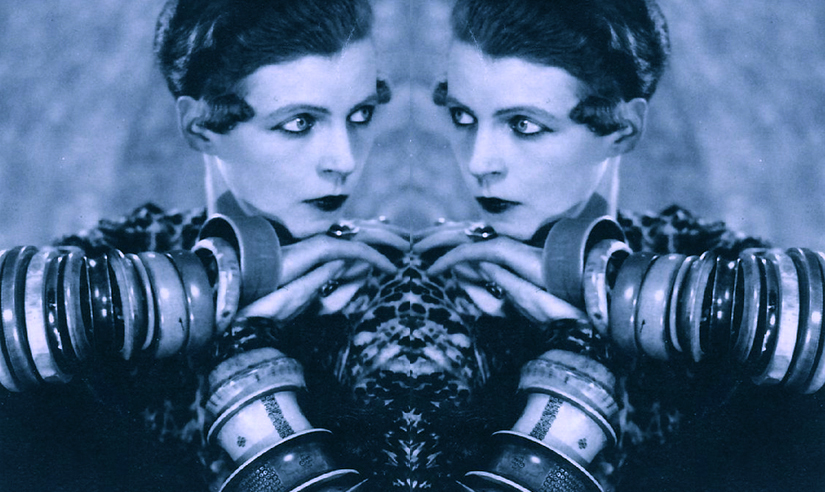Blog
Class Is In Session: Bakelite 101
What is Bakelite?
One of the most unique, consistent and identifiable collectibles in the vintage world is made from a plastic with very humble roots. Original valued as a tough, inexpensive, plastic that would not conduct electricity it was used extensively in electrical equipment, and later was used extensively for early telephones. The original formula was only available in black, but enterprising manufactures began experimenting with different formulas leading to the production of a wide array of unique and colorful variants that launched this humble plastic into the world of high fashion that has only gotten stronger over the years.
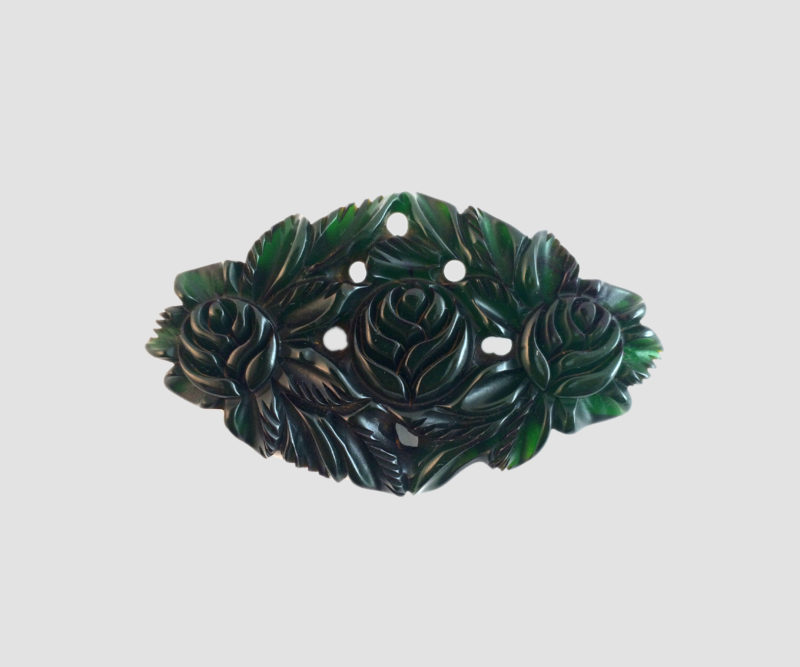
Emerald Green Floral Bakelite Pin
Bakelite jewelry
Once companies began producing colorful Bakelite it was used for everything from fountain pens, and salt and pepper shakers to door knobs, radios, and of course costume jewelry. Beginning around 1920 Bakelite was used to create wildly colorful, inexpensive and sometimes whimsical pieces that remain highly collectible today. The restrictions on the use of metals during wartime, contributed significantly to the switch to plastics for jewelry and other non-essential items in the 1940’s.
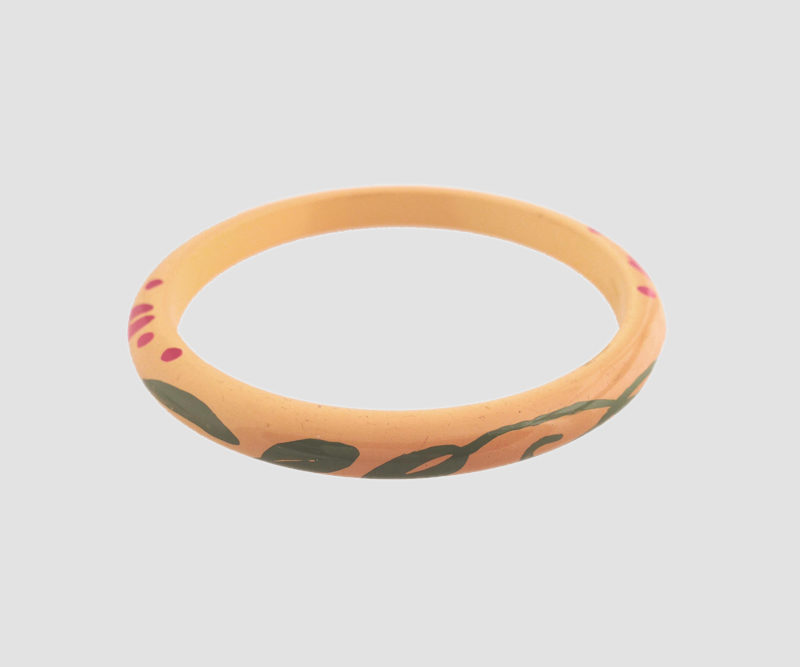
Bakelite Butterscotch Hand Painted Floral Bracelet
How is Bakelite Made?
The process for making Bakelite jewelry involves using Phenol and formaldehyde. The phenolic resin that makes up these pieces is known for its unique durability. Unlike other types of plastics which can be reshaped or melted by reheating, Bakelite is a thermoset plastic will not soften, change shape or melt when reheated, instead it burns.
This unique characteristic of Bakelite means it cannot be molded into final pieces like other plastics. The raw Bakelite created and delivered to factories in bulk form as custom shapes like tubes, or blocks that must be machined, cut, carved and polished by craftsman to become beautiful accessories or jewelry.
Decorating and engraving these pieces was mostly done by hand. This hand crafted quality ensures that many older Bakelite pieces are unique, “one of a kind” pieces. Raw Bakelite was available for purchase by anyone, and many artisans’ and small studios also began producing unusual, and often whimsical pieces in limited quantities.
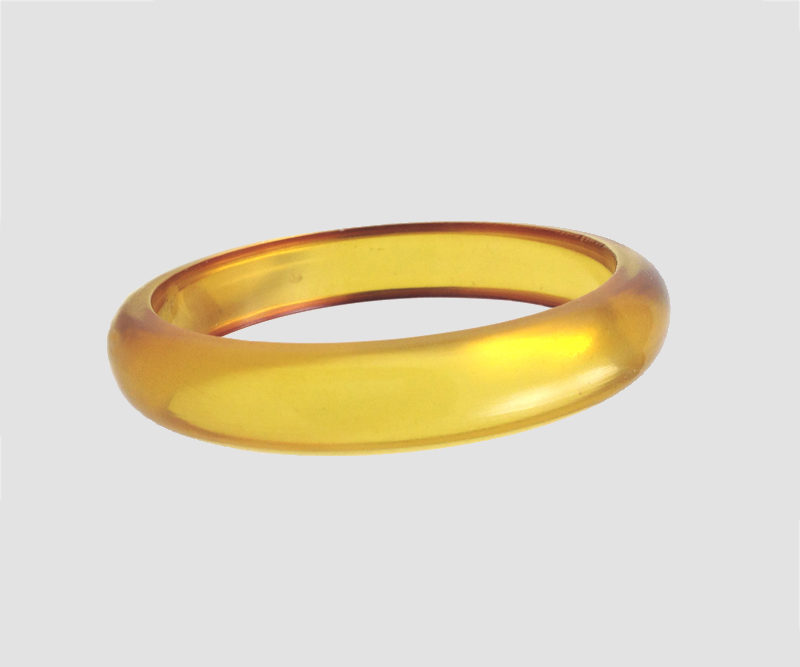
Bakelite Apple Juice Prystal Bracelet
How Valuable is Bakelite?
Originally marketed and sold by department stores as costume accessories for between $5 and $35, most of the vintage Bakelite we see today sells for hundreds of dollars. The artist Andy Warhol fell in love with Bakelite in the early 1980’s and is said to have bought every piece of Bakelite he could find. Ultimately he amassed an extensive collection that sold after his death in 1987 at auction for record prices. This helped Catapulted the value of Bakelite jewelry to unheard of heights that remain today. Some of the rarest and most unique pieces can easily exceed $3,000.00 Bakelite pins, bangles, and necklaces that sold in the 1990’s for under $20 are now worth well over 10 to 20 times that much.
Many collectors value early Bakelite jewelry for their historical significance as well as their wild color combinations and hand craftsmanship. Some recent examples of the value of Bakelite Jewelry are listed below:
A 2 7/8 inch cherry red Frog brooch, with a movable arm playing stringed instrument sold recently for $1,058. Three heavily carved 8 inch licorice, butterscotch and cherry bracelets; sold for $2,468.
A 3 inch brooch depicting three bunches of matches hanging from a cigarette sold for $3,760.
Two 8 inch Injected dot bangle bracelets in lime and orange with cream dots went for $5,405. A heavily carved Bangle bracelet with palm trees and flowers from the Warhol collection sold for $6,756, and two
Injected dot bangle bracelets in licorice and cherry with cream dots sold for an eye popping $8,225.
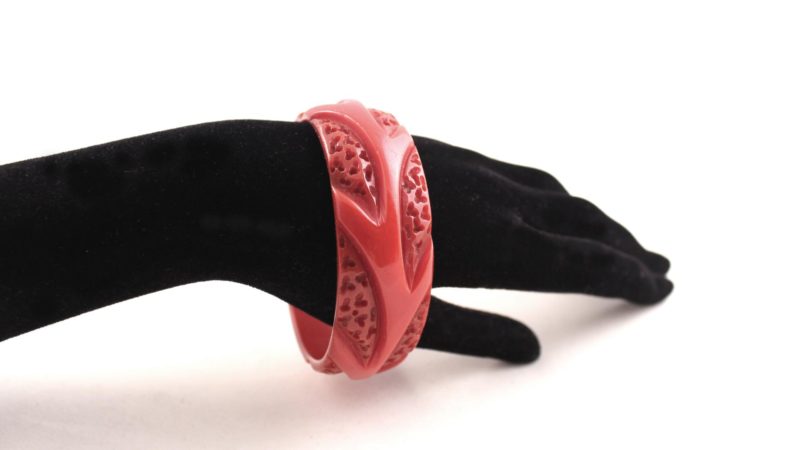
Vintage Bakelite Branch Carved Bangle Braclet
Can Bakelite be Counterfeited?
The desirability and high value of old Bakelite has unfortunately resulted in counterfeit Bakelite, sometimes called “Fakelite”. Fakes often have a chalky appearance around the carved edges and there is a very distinct click that occurs when two pieces of Bakelite jewelry are gently tapped together that’s missing with fakes. Identifying older Bakelite pieces can also be accomplished by closely examining its markings and carved details. When examined under a magnifying glass, you can see vintage tool marks which have been reduced during polishing but remain visible. Clean perfectly smooth well defined machine marks in carved details are highly suspicious.
Bakelite left in its natural condition normally develops a patina on the outer surfaces. This is a result of oxidation and can significantly alter the color. Polishing an old original undisturbed piece will usually reveal a different color underneath. Close scrutiny of any Hardware such as clasps or screws can also be a very good way to identify an older original piece. If all else fails, before committing big dollars to purchase a “rare find” have it tested by a reputable dealer to confirm authenticity.
We hope is preliminary article on Bakelite has been helpful, we have more in-store in future posts that go deeper into the exciting world of Bakelite collectibles!

